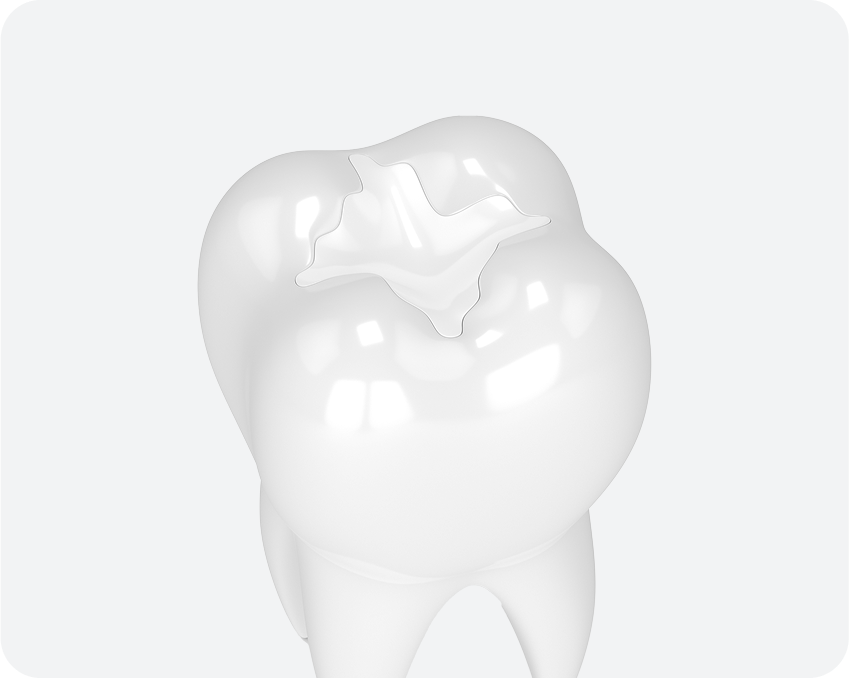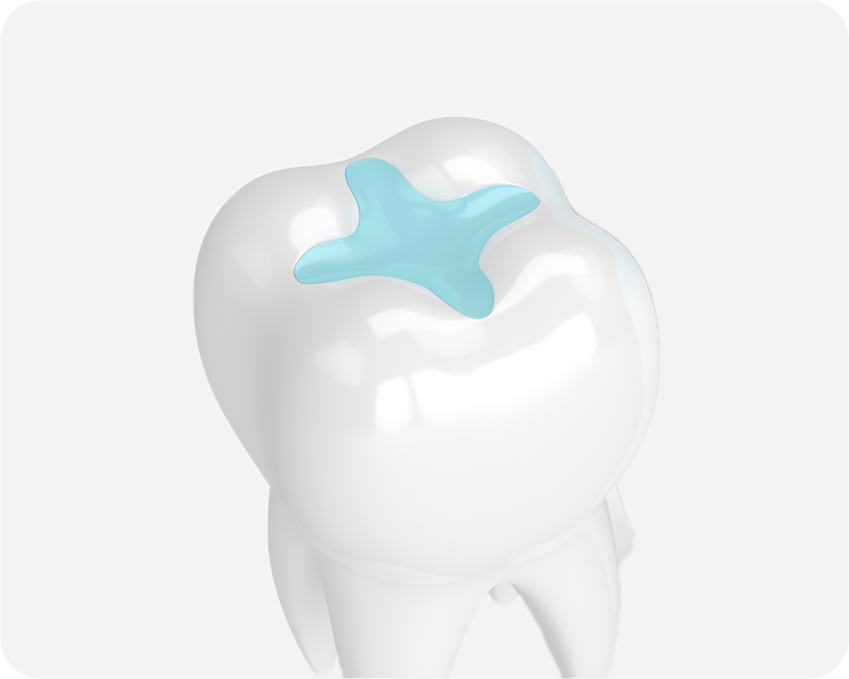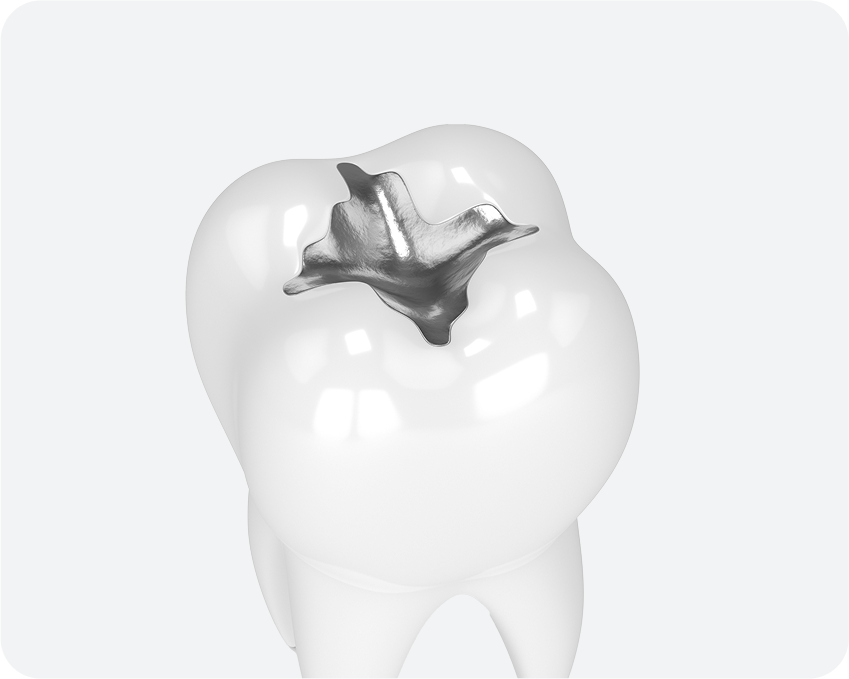
Dental filling: what to know before care
Simple, effective and affordable, dental fillings are a go-to option for treating cavities, especially when caught early on. At Aspen Dental, we use this common treatment to remove decay and bacteria, restore the function of any affected teeth and minimize pain or sensitivity to keep your natural smile at its best. If you’re experiencing issues with cavities, come see us today.
What is a tooth filling?
A tooth filling is a restorative treatment that repairs a tooth that has been damaged by decay or minor fractures. When getting a filling, your dentist will remove any decay in your tooth and then fill the leftover space with either composite resin, glass ionomer or amalgam. This restores shape and function of your tooth while helping to minimize any discomfort or sensitivity.
Why are dental fillings important for oral health?
Benefits of dental fillings | Risk of delaying treatment |
Removes decay | Untreated, decay may spread |
Restores your tooth | May weaken your tooth structure |
Stops spread of decay | Can cause fractures or breaks |
Helps prevent future invasive procedures | May lead to expensive treatments later on |
Experience any of these? You may need a dental cavity filling.
Types of dental fillings explained
Learn all about the different types of fillings to see which might be right for you.

Composite fillings
The top choice for tooth restoration—a resin composite filling is made to match your tooth’s shade for a natural appearance.

Glass ionomer fillings
Commonly used for children and small cavities, these fillings release fluoride, which can help prevent further tooth decay.

Amalgam fillings
Silver tooth fillings (amalgam filling) are durable, cost-effective and can contain metals such as silver, tin and copper.
How much does a dental filling cost?
Dental fillings are an affordable form of restorative care that helps treat cavities and chipped or worn teeth. They save you time and money upfront by preventing the spread of bacteria, infection or decay that can lead to more costly and invasive treatments later on. To learn more, explore what goes into the cost of a dental filling today.
Does insurance cover tooth fillings?
With or without insurance, we help remove financial barriers to help make sure you get the care you need.
Most insurance accepted
We work with most providers to make care accessible as much as possible. We do not accept Medicaid.
Check if your insurance is accepted >
Affordable dental fillings without insurance
No insurance? No worries. For only $49/year, we offer our Aspen Dental Savings plan so you can save 15% on dental fillings.²
Discover the Aspen Dental Savings Plan >
²The Aspen Dental Savings Plan is NOT insurance. Please see plan terms and conditions for details.
Why choose Aspen Dental for a tooth filling?

We offer a full suite of dental services for all of your smile needs.

With same-day availability and flexible hours, seeing your provider is easy.

99% of patients who apply for 3rd-party financing are approved.
Our dental filling procedure
In as little as 60 minutes, from start to finish, we can remove decay, fill a cavity and restore your oral health.
Prepare & numb
To start, we’ll apply a local anesthetic to make sure you’re comfortable during your treatment.
Remove, place & shape
We’ll remove decay, then place and shape your filling to the affected area of your tooth.
Polish & check
We’ll polish your tooth and check your bite to make sure your teeth are comfortably aligned.
“I had to get a cavity filled, and my dentist did an excellent job! I left happy and comfortable with my bite.”
Isabelle M.
Warrington, PA
How to care for your dental fillings
Taking care of your dental fillings is just like caring for your natural teeth. Here’s how to make the most of yours.
Brush daily
Twice a day, brush your teeth with fluoride toothpaste. Fluoride remineralizes and strengthens tooth enamel while protecting your filling.
Visit regularly
Always come in for hygiene visits every 6 months. We’ll clean any missed spots or stains and help prevent bigger dental issues.
Report damage
If you notice any damage or unusual symptoms let us know immediately. We’ll help minimize complications and any other issues.
Mouthguards
Nightly grinding is a common cause of chipping and broken fillings. Let us know if you think you need a mouthguard or night-guard for sleeping.
When to replace your dental filling
To help prevent issues with your dental filling, it’s important to come in for your routine checkups. When you come in, your dentist will track how your fillings are looking and replace them as needed. In between visits, if you experience any of the following, give us a call immediately as it may be time to replace your filling.
Loose fillings
Gaps at the edge of a filing
Cracks or chips in your filling
Dental pain of any kind
Dental filling FAQs
What are dental fillings made of?
At Aspen Dental, dental fillings can be made from:
Composite resin
Glass ionomer
Amalgam (silver or a mix of silver, tin and copper)
Each material has different benefits, such as durability, appearance and cost. Your dentist will help you choose the best option for your dental needs and budget. Schedule an appointment today for a customized care plan and estimate.
How long do dental fillings last?
With proper oral hygiene, dietary habits and home-care, your filling can last several years. The lifespan of dental fillings depends on the material of your filling, home-care and your daily oral habits. With good brushing, flossing and regular checkups, you can help extend the lifespan of any type of filling.
If you’re coming in for your routine checkups, your dentist will track how your fillings are looking and replace them as needed. In between visits, if you experience any of the following, make sure to give us a call or see us immediately if you’re experiencing:
A loose filling
Gaps at the edge of filling
Cracks or chips in your filling
Dental pain of any kind
Does getting a tooth filling hurt?
Wondering, “do cavity fillings hurt?” Good news, a tooth filling procedure is typically painless due to local anesthesia. During your procedure, you may feel light pressure or vibrations. If you feel discomfort or pain at any point, let your dentist know immediately. After your procedure, mild sensitivity is common and should fade with time.
Is a dental filling covered by insurance?
Most dental plans cover part or all of a basic filling
Some back-tooth composites may require extra payment
Bring your insurance details and we’ll confirm what your plan is likely to cover. See accepted insurance providers>
